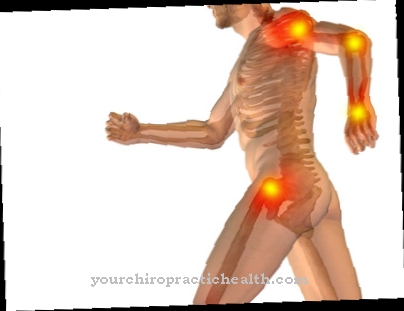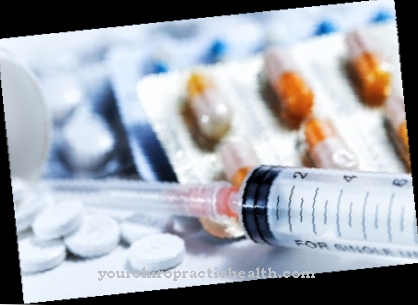Heparin Today's medicine is indispensable as an anticoagulant: Regardless of whether it is used in the treatment of acutely life-threatening events such as a heart attack or pulmonary embolism, or as a prophylactic dose to prevent thrombosis during operations or long air travel, heparin and its various derivatives such as Mono -Embolex or Clexane are important building blocks of medical practice everywhere. Heparin is actually an endogenous substance.
What is heparin

Heparin is a substance used as a drug in pharmacology that interferes with blood clotting and inhibits it. Therefore, heparin is also known as a blood thinner.
From a chemical point of view, heparin is a glucosaminoglycan, i.e. a chain of amino sugars which occurs naturally in tissue mast cells in humans and animals.
Natural heparin is therefore originally obtained primarily from the mucous membrane of the small intestine of pigs, which is particularly rich in this substance.
Pharmacological effect
Due to the rather short-term effect of the Heparin the drug is mainly given in acute emergency situations or for short periods in hospital, and not as long-term therapy (as is the case with other "blood thinners" such as Marcumar® or Aspirin®).
The substance can be given into the vein (intravenously), where it takes effect immediately, or by injection into the subcutaneous fatty tissue, from where it then slowly and continuously enters the organism over a longer period of time and in lower doses.
The pharmacological effect is based on an intervention in the natural coagulation process of the blood: Various coagulation factors swim around in our blood every day and, in response to certain stimuli, clump together with the blood platelets (thrombocytes), which plug wounds, but also emergencies such as thrombosis, strokes or heart attacks arise. In healthy people, this coagulation activity is controlled by counterpart substances such as antithrombin III, which dissolves the coagulating factors that constantly coagulate and can thus prevent excessive blood coagulation and thus infarcts and thromboses.
Heparin is released by the body itself in critical situations in order to activate antithrombin III and to strengthen its binding force to the coagulation factors about a hundred times. If you extract heparin from pig intestines or beef lungs and prepare it chemically, you can give it to humans and thus effectively suppress their blood clotting.
Many other representatives from the group of heparinoids are now also produced synthetically and pharmacologically modified in order to make them more effective or less allergenic.
Medical application & use
The area of application of the Heparins is widespread and across the entire spectrum of medicine: For example, the syringe into the subcutaneous fat can be used on long air or bus trips to reduce the risk of thrombosis.
The nurses and nurses in the hospital do the same when they are in hospital for longer periods or before and after operations. Even after injuries to the legs, for example if a cast or a splint has to be worn for a long time, it makes sense to suppress blood clotting for a short time by administering heparin every day. Usually no original heparins are used, but modified substances with the same effect but better pharmacological conditions and fewer side effects.
Classic heparin is still used, however: in acute therapy for myocardial infarction, intestinal infarction, pulmonary embolism, leg vein thrombosis and stroke, high doses of heparin are administered intravenously in order to dissolve the existing blood clot or at least not to let it get any bigger and thus prevent worse. A definitive therapy, for example by means of a cardiac catheter examination, usually follows.
Risks & side effects
Heparin is, as it is an endogenous substance, in principle quite few side effects. The main problem is therefore also derived from the effect of the substance:
By inhibiting blood clotting, the risk of bleeding increases, wounds heal more poorly, and life-threatening internal bleeding such as cerebral haemorrhage can even occur. For this reason, recently operated patients, people with open wounds or stomach ulcers, with severe high blood pressure or known coagulation disorders are often not allowed to receive heparin. Lower dosages or related substances such as heparinoids are sometimes an alternative. The administration of heparin is ultimately always a balance between the risk of the underlying disease and the risk of a bleeding side effect.
Furthermore, allergic reactions or hair loss can occur, and osteoporosis has also been described as a side effect of long-term heparin therapy. What is feared in hospitals is the occurrence of so-called heparin-induced thrombocytopenia (HIT), i.e. a lack of blood platelets due to the administration of heparin. The daily monitoring of the blood values is therefore absolutely necessary with high-dose heparin therapy.

























.jpg)

.jpg)
